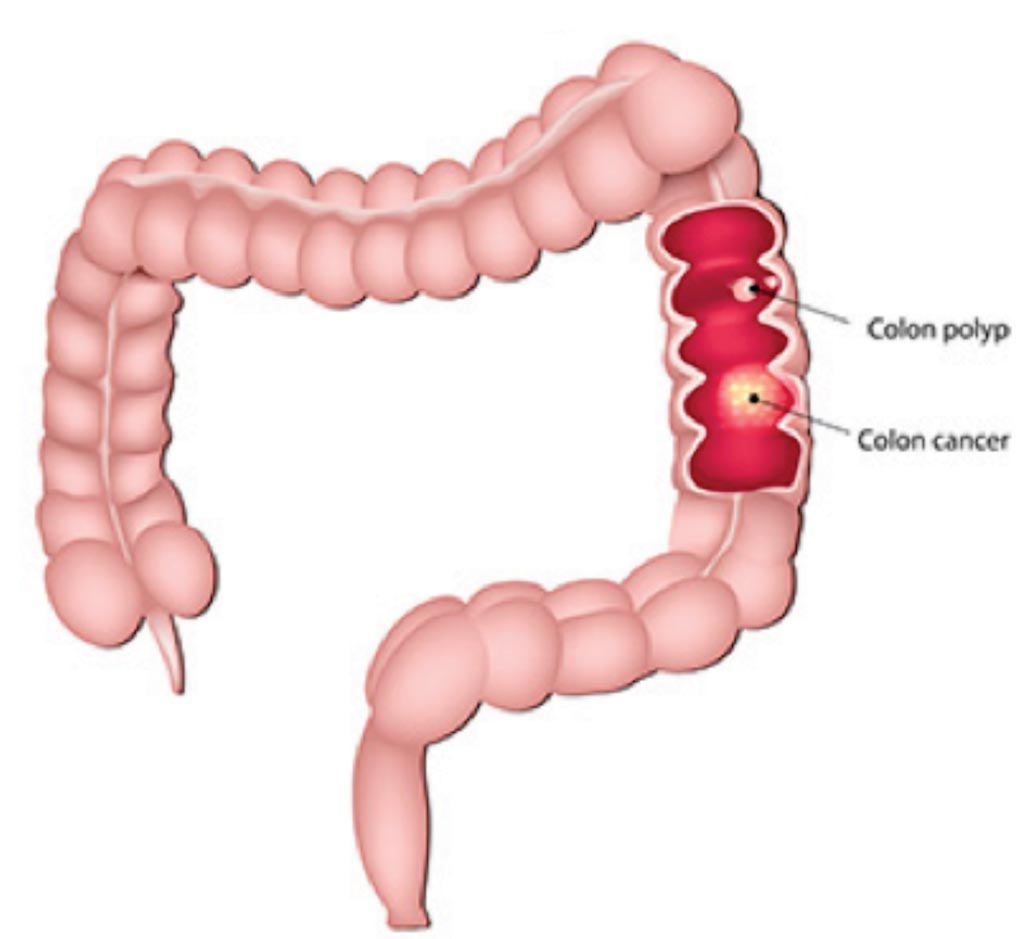Colorectal Cancer Clues Provided by Polyp Profiles
By LabMedica International staff writers
Posted on 03 Mar 2018
Colorectal cancer (CRC) develops through progressive accumulation of alterations beginning with abnormal growth of the colon epithelium, which over time can transform to an adenomatous polyp and then cancer.Posted on 03 Mar 2018
Though it is well recognized that benign adenomatous polyps are prone to progress to colorectal carcinoma (CRC) over time, there are still unanswered questions about the specific mutations, expression changes, and epigenetic shifts that determine whether a polyp will remain harmless or morph into cancer.

Image: A diagram of colon cancer and a colon polyp; not all polyps are cancerous, but nearly all colorectal cancers begin as a polyp (Photo courtesy of Jefferson Health).
Scientists at the Mayo Clinic (Rochester, MN, USA) and their collaborators analyzed 90 samples collected over more than a decade at the Mayo Clinic from 31 individuals with cancer-free lesions or with polyps that had advanced to colorectal carcinomas. They used a combination of whole-genome sequencing, RNA sequencing, and reduced-representation bisulfite sequencing (RRBS) to profile cancer-adjacent or cancer-free colorectal adenomatous polyp samples from dozens of individuals with or without colorectal cancer.
The team used HiSeq X instruments and collaborators at the Broad Institute did whole-genome sequencing on all of the available polyp samples, generating 30-fold average genome coverage of these samples. They also performed RNA-seq and RRBS paired-end sequencing on 69 and 76 samples, respectively, with Illumina HiSeq 2000 and/or 2500 instruments. The team noted that that the cancer-adjacent polyps (CAP) tissues taken from CRC-neighboring sites from 16 CAP cases included tissues from the residual polyp of origin and contiguous cancer. On the other hand, the cancer-free polyps (CFPs) came from 15 individuals with lesions that had not progressed to cancer.
The investigators reported that along with a significant uptick in somatic mutations, CAPs showed altered expression of genes such as GREM1 or IGF2 and a sharp rise in methylation in many portions of the genome, relative to the CFP. While genes such as APC, KRAS, and BRAF were significantly mutated in cancer-free and cancer-adjacent polyps, other genes appeared to have CAP-specific mutations; a set that included TP53, SMAD2/4, and PIK3CA. The integrative analyses, brought together molecular data from all three of the approaches used to characterize the samples, highlighted 124 genes with CAP-related alterations revealed by two or more molecular alteration types. The study was published on February 16, 2018, in the journal Scientific Reports.
Related Links:
Mayo Clinic














